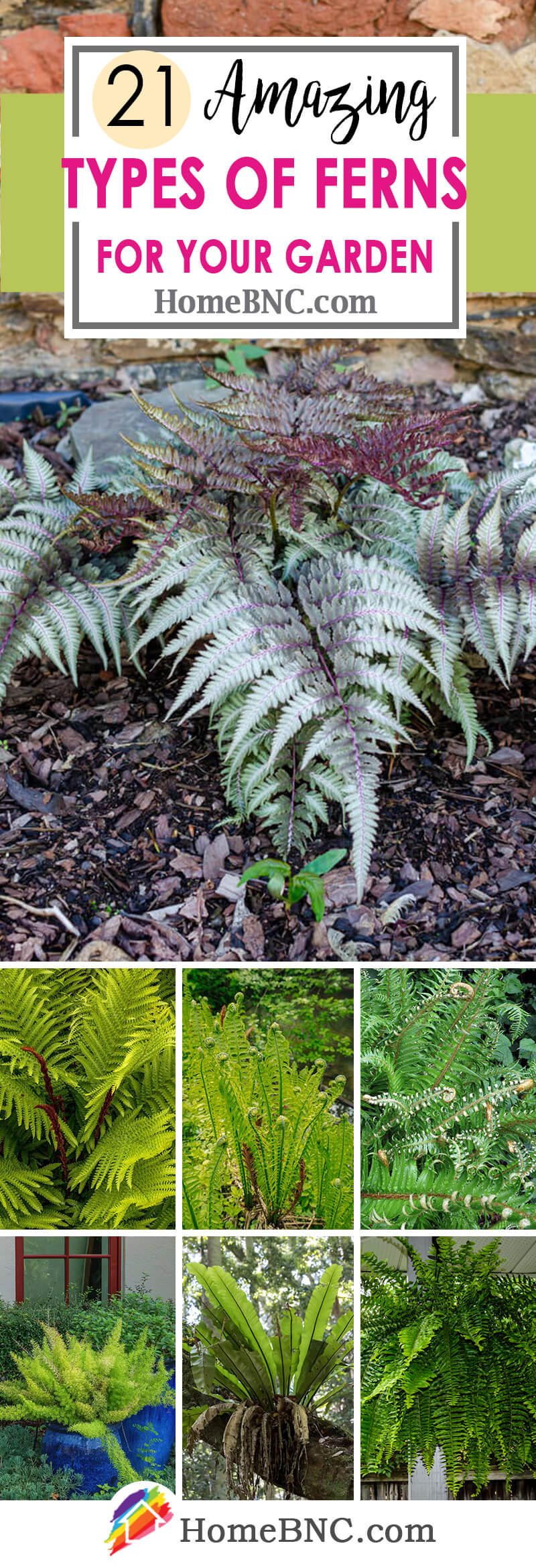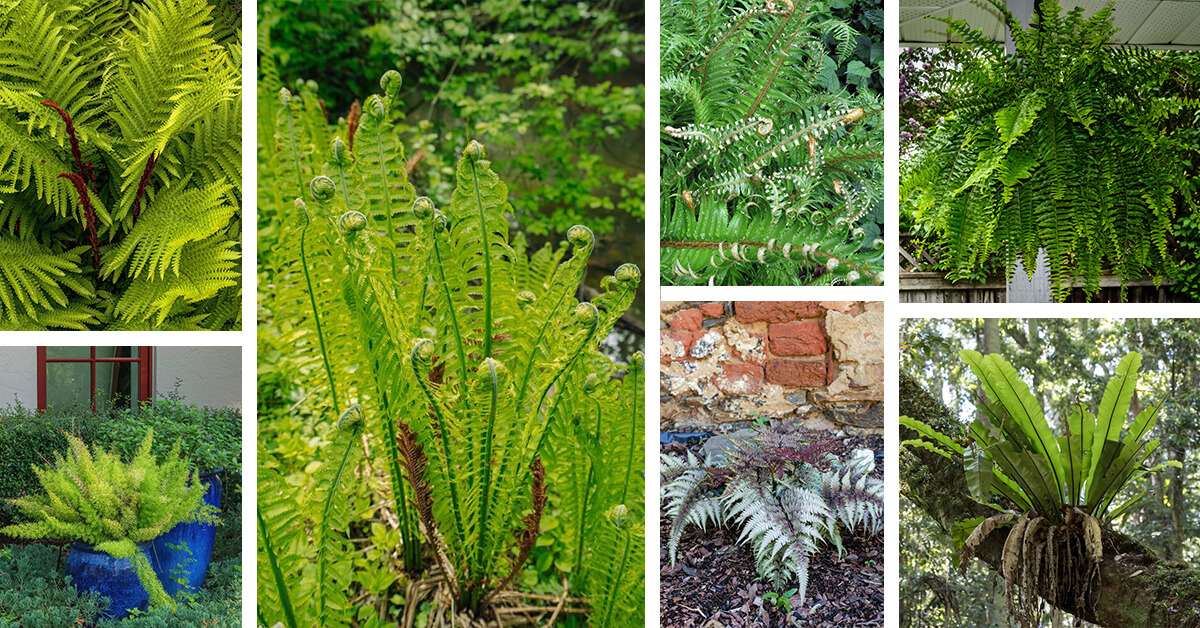Ferns are an incredibly well-known group of plants, but that notoriety has led some people to assume that ferns are somewhat commonplace and relatively uninteresting compared to other ornamental garden species. However, nothing could be a more incorrect assumption. While there are plenty of ferns that fall into that classic fern style and appearance, there are other types of ferns that have foliage and other features that are as surprising as they are lovely. This article will prove that point and more by providing you with a list of the best types of ferns that you can grow both indoors and outdoors.
Key Takeaways
The list you are about to read will reveal how truly diverse fern plants can be. However, despite that diversity of options, you’ll notice that there are several common facts about ferns. Below is a list of a few of those key points that you should commit to memory as you move through the excellent fern options we have collected here:
- Fern fronds come in a surprising amount of shapes and sizes.
- Ferns can be species from many different genera.
- Some plants go by the common name fern but are not true ferns in a botanical sense.
- Many of the most common ferns have broad fan-shaped fronds.
- Ferns love to live in moist areas that receive lower amounts of light.
21 Astounding Types of Ferns to Grow Indoor and Outdoor that Look Great Wherever You Plant Them
1. Autumn Fern (Dryopteris erythrosora)
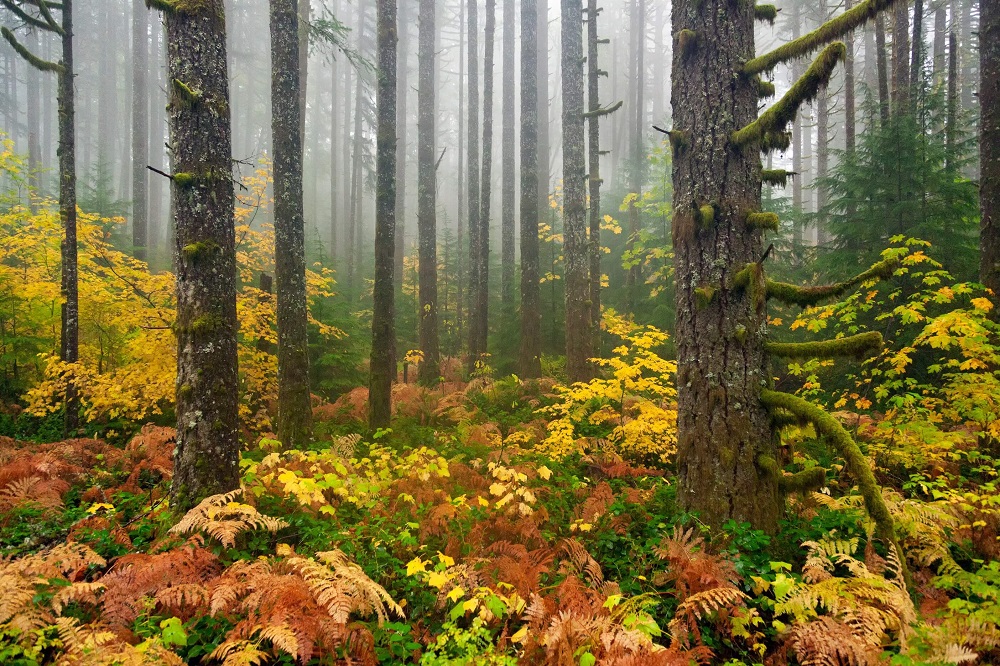
Kick off our list with one of the more colorful fern varieties that we’ll cover. Autumn fern has a fan-shaped frond style that many might call typical for a fern. But what makes those fronds stand out, and allows the Autumn fern to be easily identified early in the season, is that the new growth of this plant emerges with a light bronze hue that eventually fades to green. After a few fronds have matured, but while new fronds are still developing, the difference in shade between the new and old fronds makes for a lovely subtle contrast. Like many other ferns that we’ll mention, the Autumn fern is a woodland plant species that thrives in moist soils under the canopies of larger plants.
2. Bird’s Nest Fern (Asplenium nidus)
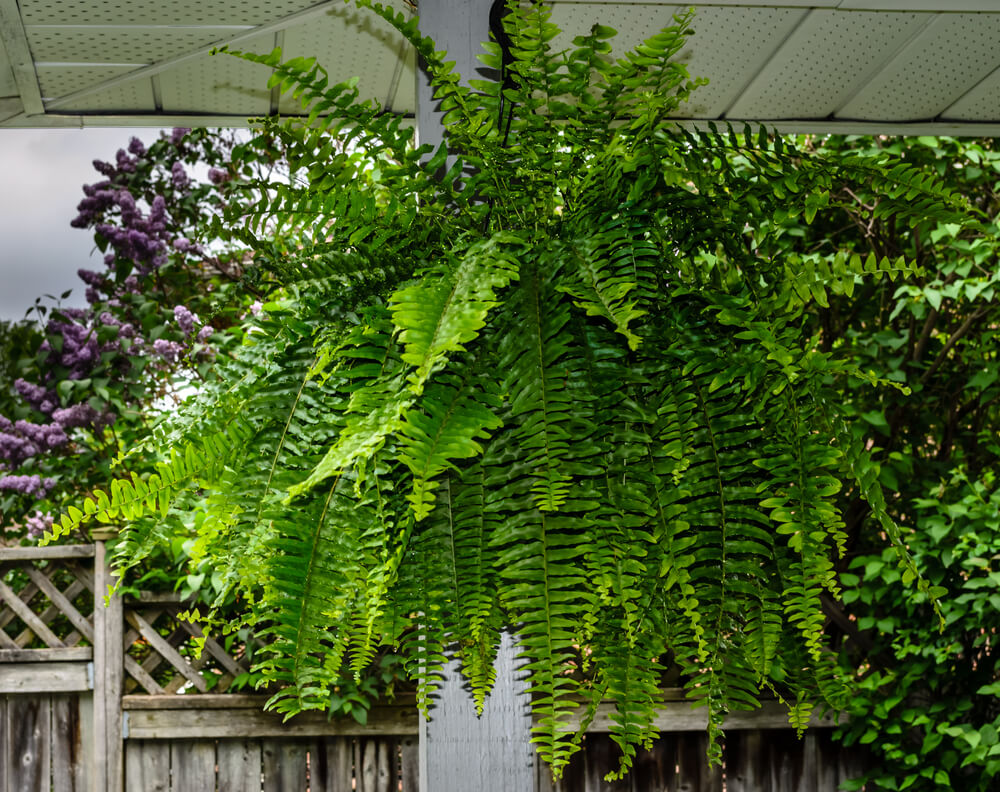
When first encountering the bird’s nest fern, it is natural not to assume this plant is a fern at all. That immediate assumption is reasonable due to two main factors. First, the foliage of a bird’s nest fern is long, oval-shaped, and much more leaf-like than that of other ferns. Second, rather than growing exclusively on the forest floor, a bird’s nest fern often grows in the wild by attaching itself to the branches and trunks of large trees. However, the most common way that you’ll find this plant growing is as an adorable little house plant that fits neatly into a container and thrives in indoor areas that are somewhat humid and have a good amount of light exposure.
3. Boston Fern (Nephrolepis exaltata)
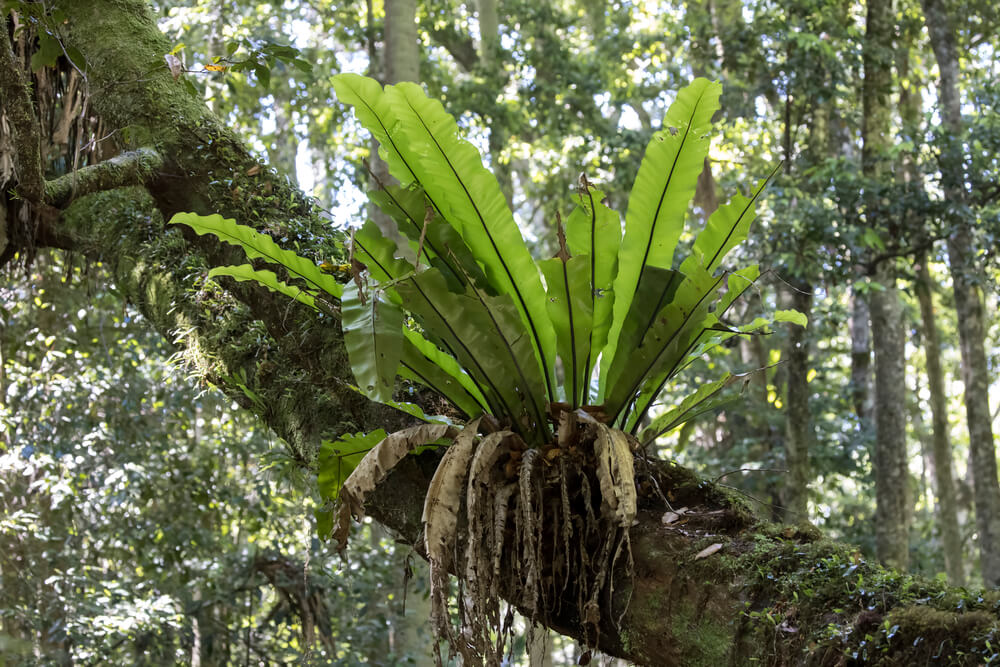
The Boston fern develops long fronds that grow large enough to dangle over the edges of the container in which this plant grows. Due to that growth habit, Boston fern often looks best in hanging baskets, whether indoors or out. However, when growing a Boston fern indoors, it is important to compensate for the lack of air moisture that your indoor growing area likely has. Like other ferns, Boston fern prefers to live in a relatively humid environment. In many cases, the best way to recreate that environment is to run a humidifier in the area where you grow your Boston fern. Likewise, it can also be beneficial to mist your Boston fern regularly with a spray bottle to keep it somewhat moist.
4. Cinnamon Fern (Osmunda cinnamomea)
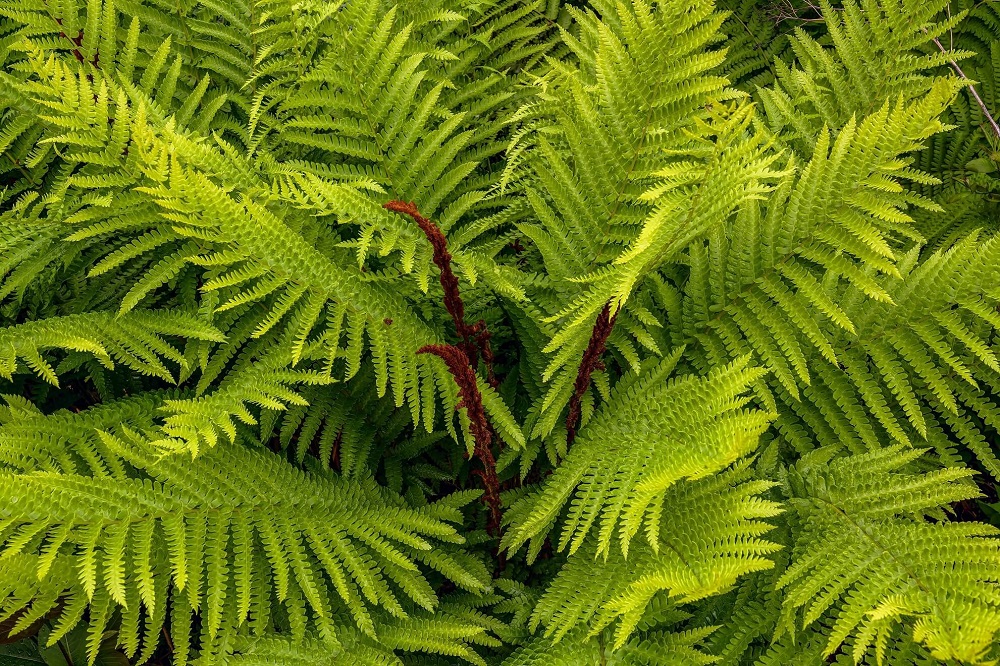
As was true of the Autumn fern that we mentioned at the top of this list, the cinnamon fern is a plant that is capable of providing intense contrast in your garden all on its own. The reason for this is that the cinnamon fern has two distinct types of fronds. The first type is the infertile frond, which is green, broad, and a lot like the fronds of other typical ferns. In the middle of the plant are the fertile fronds, which in truth, don’t look much like fern fronds at all. Instead, they are narrow, vertical, spire-like structures that have a golden-brown color. Those fertile fronds allow the cinnamon fern to be not only more colorful than other ferns but more textural as well.
5. Eagle Fern (Pteridium aquilinum)
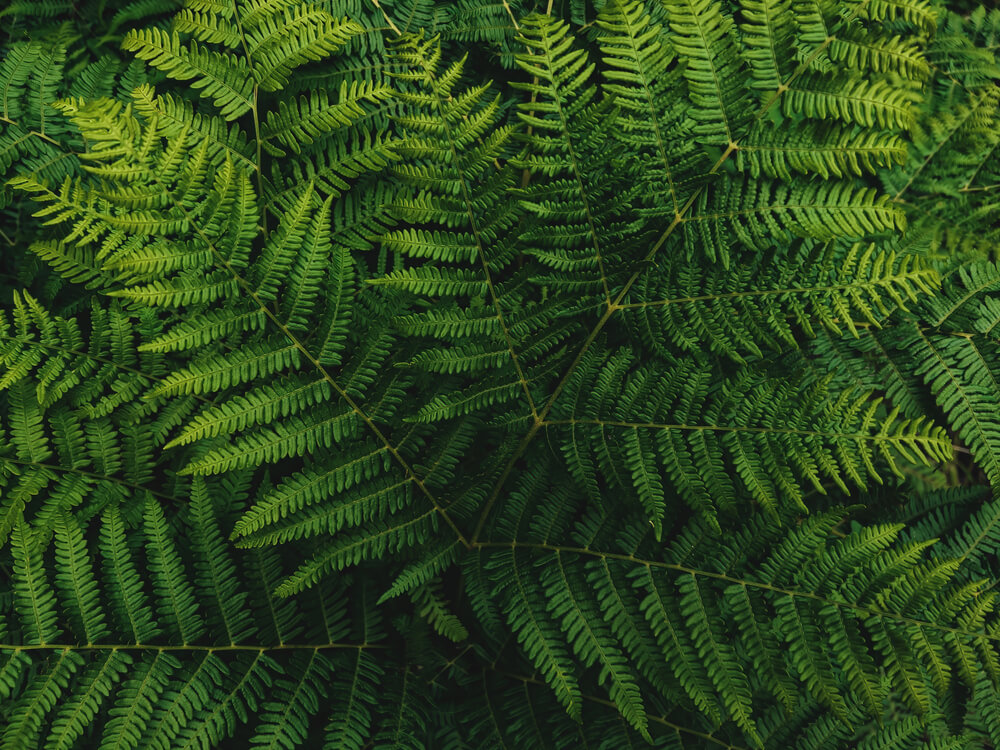
The most noteworthy aspects of the eagle fern are this plant’s size and ubiquitousness. What we mean is that the eagle fern is a relatively large fern species, often growing to about 4 feet tall at maturity with large fan-shaped fronds. On the underside of those large fronds are copious amounts of spores, which are responsible for the vast spread of this species. In fact, the spores of the eagle fern species have been so effective that this plant now grows throughout nearly every part of the world that can provide the growing conditions it prefers. Those conditions include loamy acidic soil and either full or partial shade. When those elements are in place, you can expect your eagle fern to spread quickly throughout your property, so be careful to maintain it in the designated growing area you choose.
6. Foxtail Fern (Asparagus densiflorus)
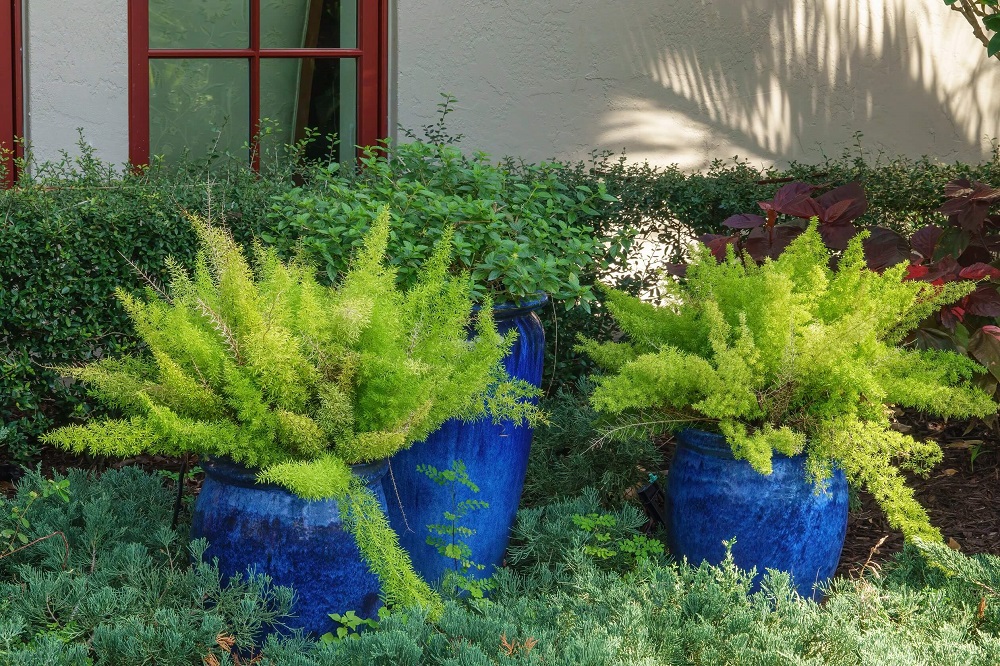
The foxtail fern is a striking fern variety that you will not quickly forget. What allows this plant to make such a lasting impression is the appearance of its foliage. The foxtail fern grows with many spike-shaped foliage clusters, each of which arches slightly before becoming almost perfectly vertical at the middle and top portions of the plant. Those spikes are incredibly feathery in their texture and are equally impressive due to their color, which is a vibrant, almost neon green at the top, that fades to a richer, darker green at the bottom. Fortunately, there’s not much you need to do to enjoy the lovely appearance of a foxtail fern since this plant is very easy to care for.
7. Hart’s Tongue Fern (Asplenium scolopendrium)
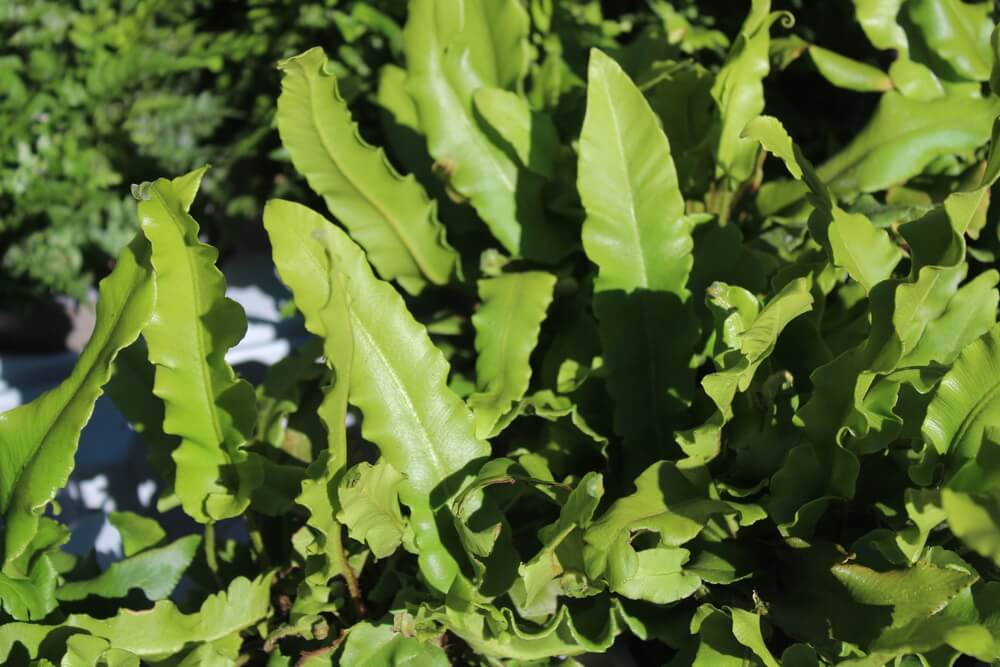
Many of the most popular ferns in existence are perennial species that will wither and decline at the end of each growing season, only to return again in the spring. However, that is not the natural growth cycle of the hart’s tongue fern. Instead, this species is evergreen, meaning that it can make your garden look lively even in the winter. But that’s not all that’s noteworthy about this plant. The foliage of the hart’s tongue plant is large and has a tropical look, despite the fact that this plant is not tropical at all. The hart’s tongue plant can grow throughout hardiness zones 5 through 9 and, like other ferns, loves to live in either partial shade or full shade.
8. Hay-Scented Fern (Lamprocapnos spectabilis)
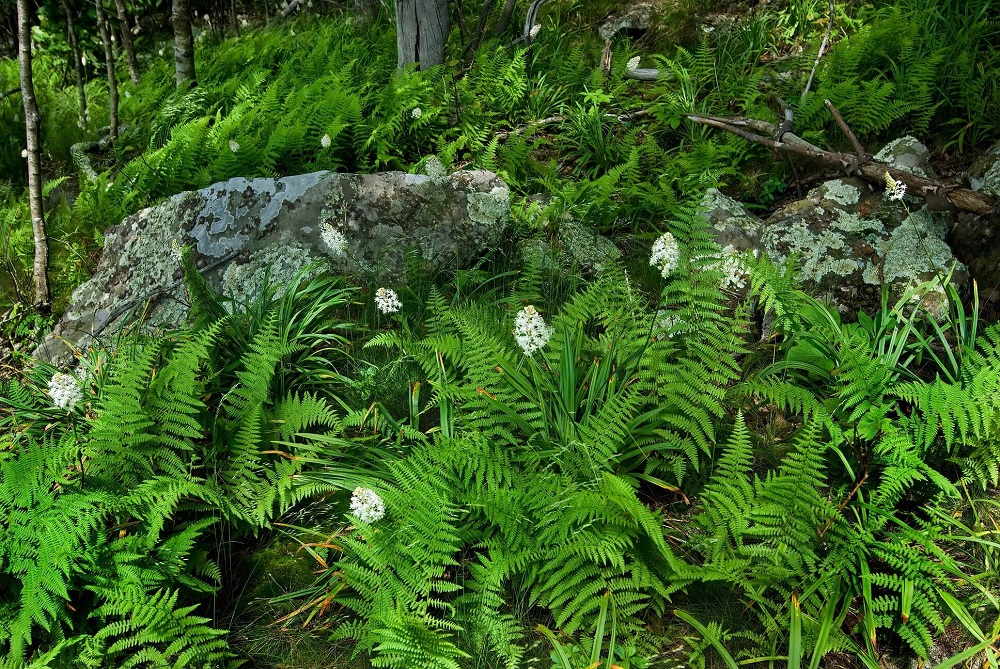
In many ways, the hay-scented fern is the standard, quintessential fern that many people imagine when they think of a fern. The new fronds of the hay-scented fern emerge with a classic fiddlehead shape. As they curl open during the early parts of the growing season, they eventually develop into a large, primarily triangular shape with a complex margin. Those fronds have an excellent and consistent true green color that allows the hay-scented fern to be a perfect background greenery option for perennial groundcover. As you would also expect of a fern, the hay-scented fern loves to live on the forest floor, where it is likely to spread widely wherever there is moist soil.
9. Holly Fern (Cyrtomium falcatum)
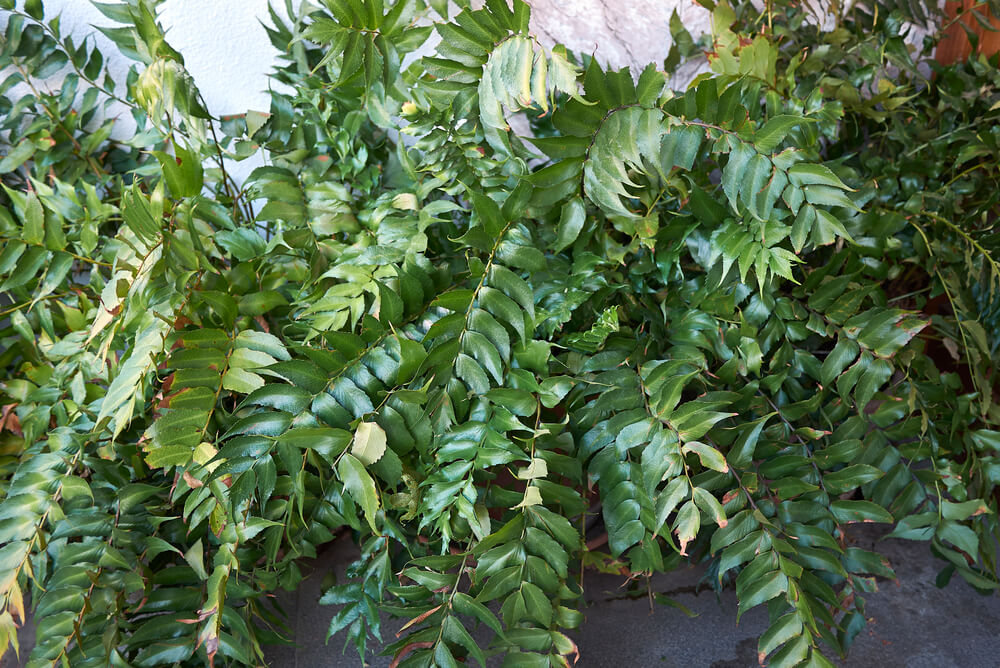
In contrast to the almost stereotypical fern-like look of the hay-scented fern, the holly fern has a look that you would not expect from a fern variety. Its name might give you some indication of what that appearance entails, but to eliminate guesswork, we’ll describe it for you. The holly fern gets its name because it is an evergreen plant with foliage that looks a lot like the glossy evergreen leaves of a holly shrub. Holly fern is also a fantastic option for anyone gardening in full shade, where most other species fail to thrive due to a lack of light. In such cases, the holly fern is the perfect option for making the shaded spaces of your yard look lush all year.
10. Japanese Tassel Fern (Polystichum polyblepharum)
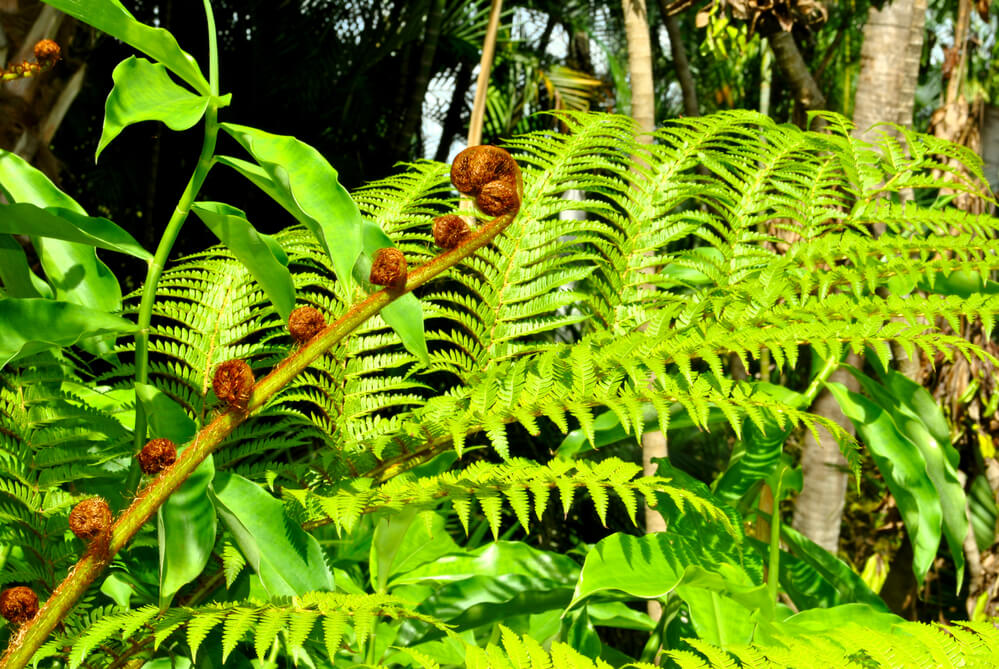
Here we have another evergreen fern species that can add greenery to your garden even during the darkest, coldest winter months. In this case, the Japanese tassel fern is well-known for its foliage, which at first glance looks a lot like a typical fern frond. However, a closer look at the foliage will reveal the true reason why it is so sought after. Each frond on the Japanese tassel fern has a lovely lustrous surface that glimmers in the light. As the name implies, the Japanese tassel fern is native to regions in East Asia, including Japan. But with that said, it can thrive in any region that is within hardiness zones 5 through 8. In those regions, this plant loves partial to full shade and rich soil with good drainage.
11. Japanese Painted Fern (Athyrium niponicum)
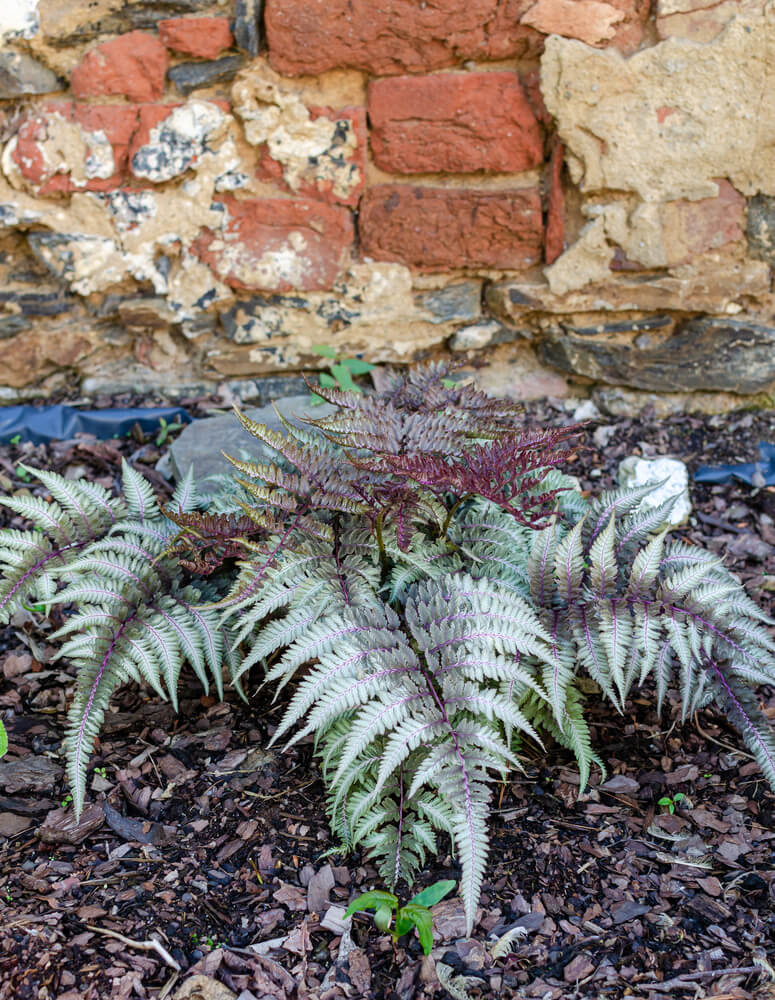
Although it is not difficult to find beauty in the foliage of every fern variety on this list, the Japanese painted fern stands out as uniquely capable of delivering some of the most impressive foliage imaginable to your garden. The fronds of the Japanese painted fern are rarely green. In place of that commonplace color, this species is more likely to display shades of purple and silver interspersed with one another throughout each frond. That color combination, along with the overall vibrance of the color, is enough for the Japanese painted fern to be a top choice for anyone who wants an ornamentally valuable fern for their landscape.
12. Java Fern (Leptochilus pteropus)
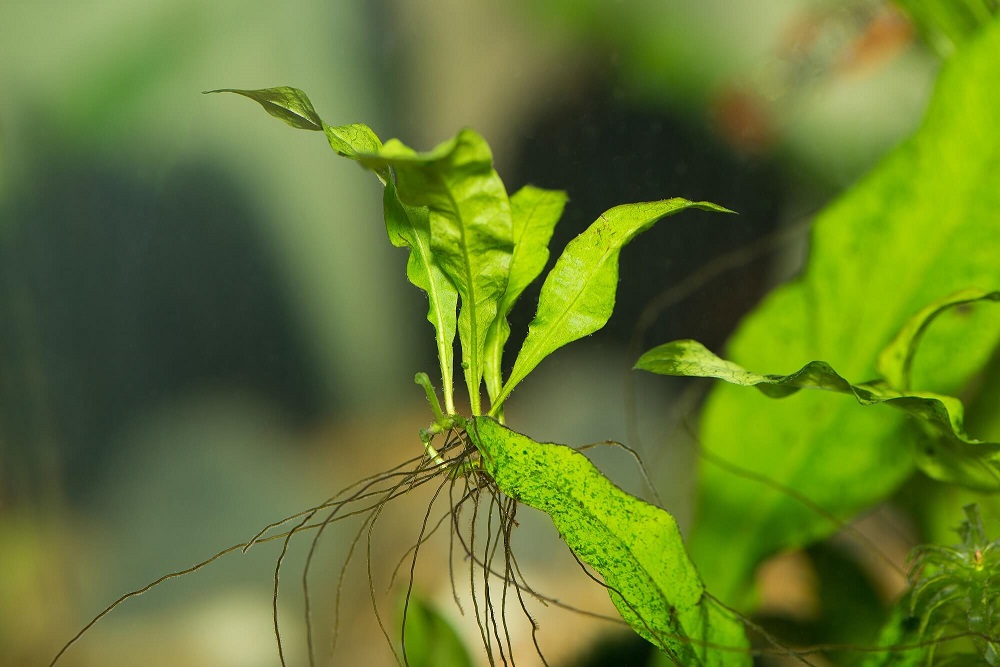
The Java fern is unlike other ferns on our list for a few reasons that we would be remiss not to point out. The first thing you should know about this plant is that it requires an entirely different growing environment than other fern plants. Rather than living as a terrestrial plant, the Java fern is an aquatic species that need to live underwater to survive. As such, this species is one of the most popular plants in the world for use in fish tanks and aquariums. Overall, this plant tends to show slow growth and has foliage that differs from other ferns by being long, broad, and leaf-like.
13. Lady Fern (Athyrium filix-femina)
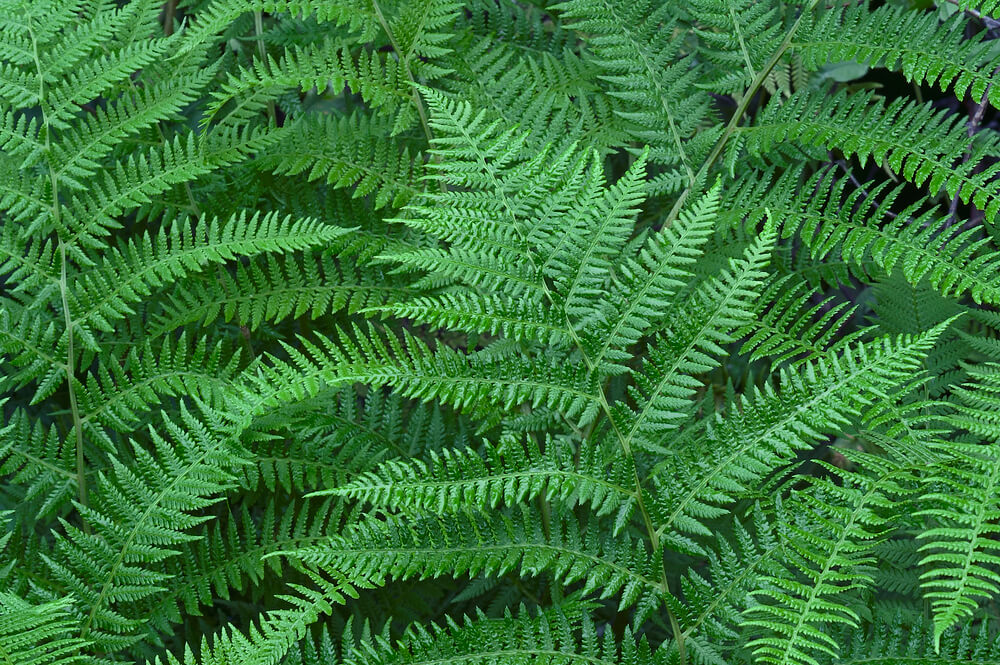
The lady fern is another classic fern that is an excellent addition to any garden that lies in partial shade or full shade. It also helps to provide soils that are moist and nutrient-rich if you want your lady fern to perform at its best. When those conditions are available for a lady fern, this plant can grow to a surprisingly large size. In some cases, the mature height and spread of a lady fern can span from 5 to 7 feet in total. The lady fern is also capable of spreading at a relatively rapid rate when it finds the growing requirements it needs.
14. Leatherleaf Fern (Rumohra adiantiformis)
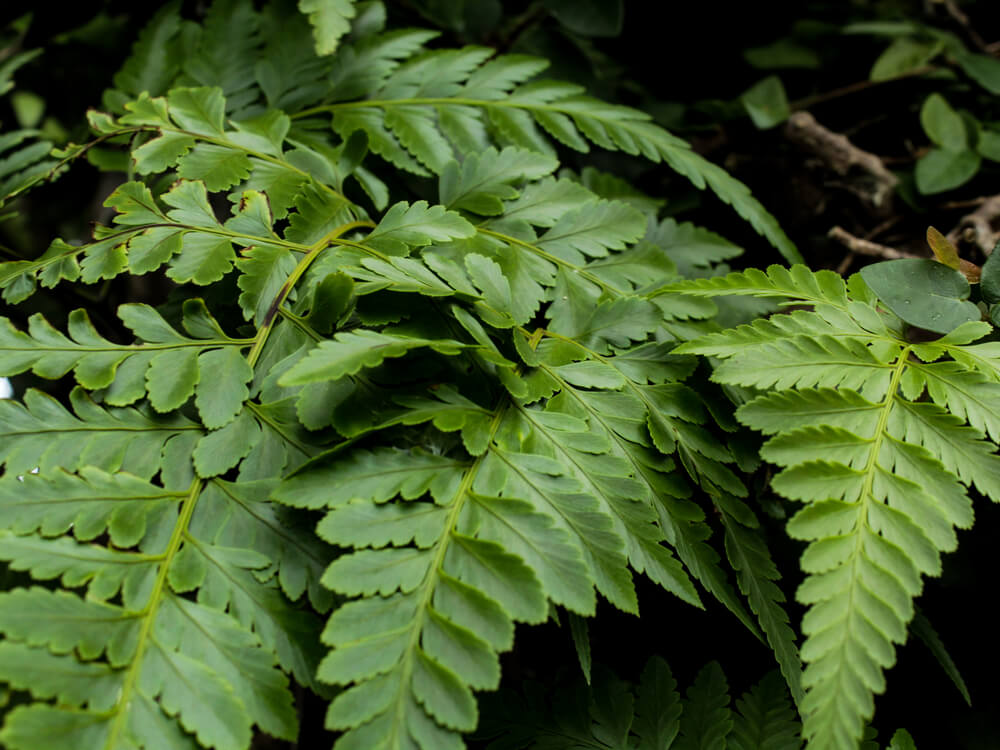
The fronds of a leatherleaf fern are large and triangular, and they include many rounded leaflets with undulating margins. Those fronds also tend to have a texture that stands out from other ferns as being very shiny. That shiny finish is part of the reason this plant goes by its common name. Generally, leatherleaf ferns will only survive outdoors in warmer climates, such as growing areas in hardiness zone 9 or warmer. Still, if you live in a location that is colder than that zone, you can still enjoy growing the leatherleaf fern by keeping it as an indoor container plant.
15. Maidenhair Fern (Adiantum raddianum)
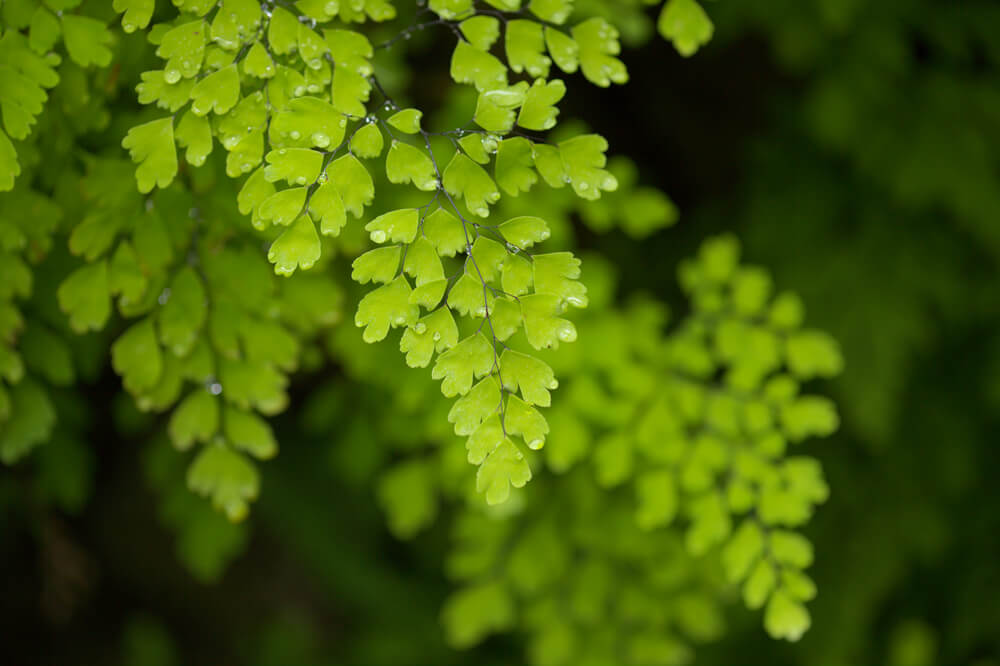
The maidenhair fern is a lovely small fern variety that can grow well both indoors and outdoors. Like other ferns, the maidenhair fern has fronds that are triangular and fan-shaped overall. However, the texture of the maidenhair fern is much different from that of other ferns. The foliage of this fern consists of small, leaflet-like structures that themselves have a triangular shape and each of which is quite small at less than one inch across. At its full size, the maidenhair fern will be about one to two feet tall and wide. But with that said, this plant often grows wider than it does tall.
16. Ostrich Fern (Matteuccia struthiopteris)
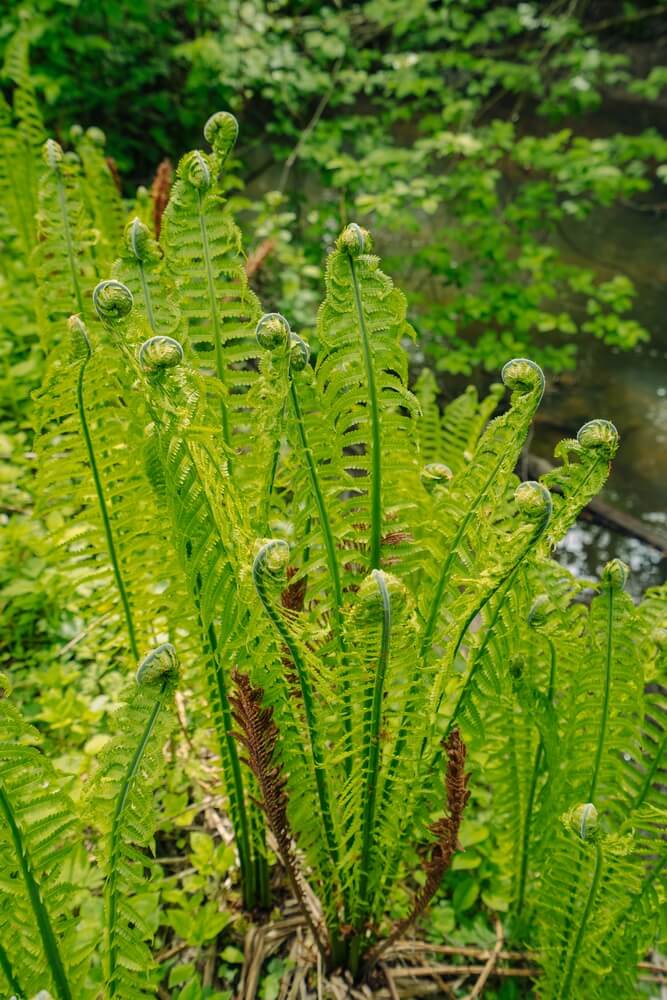
The ostrich fern is a familiar sight throughout the broad-leaved temperate forests of the eastern United States. In that native range, you can find this plant developing beneath trees like oaks, maples, and other large deciduous species where there is filtered light and moist soils. The ostrich fern gets its name due to the fact that its fronds are remarkably similar in size and shape to the individual feathers of an ostrich. Each frond has a long central stem that is mainly vertical but bends ever so slightly away from the center of the plant. The fronds also have a frilly feather-like texture that only adds to the accuracy of its name and the beauty of your garden.
17. Ribbon Fern (Pteris cretica)
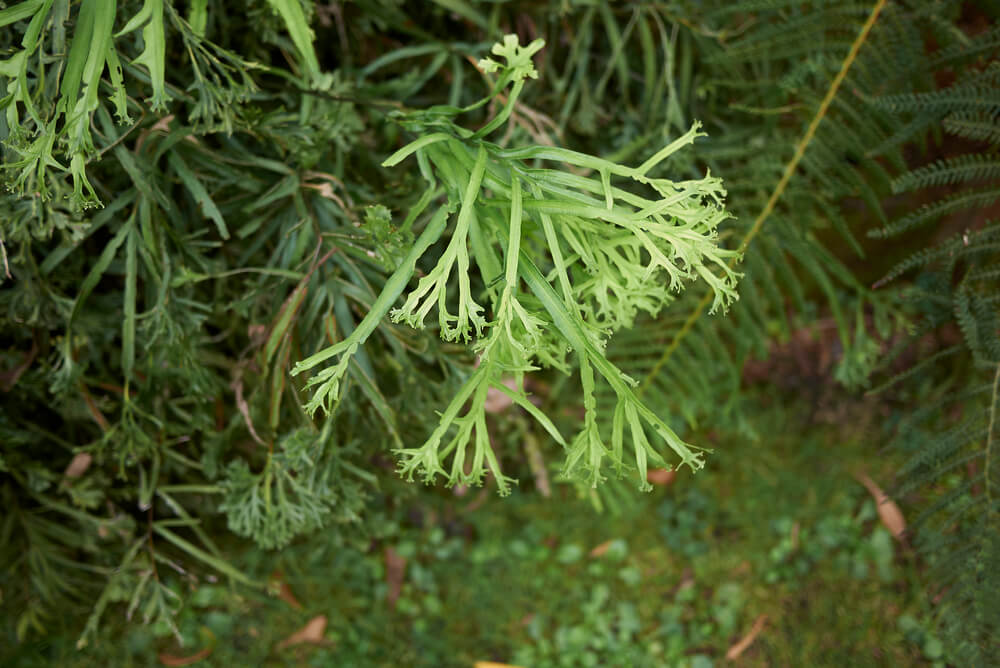
Are you a fern lover that wants a fern variety that is a little bit outside of the box? If so, then the ribbon fern is a great option for you. The ribbon fern has fantastic foliage that is shaped like, you guessed it, a ribbon. However, it is not the shape of the foliage alone that makes this plant attractive and valuable. There are also several cultivated versions of this plant. Each of those cultivated varieties tends to have a different and equally interesting foliage color. Some are even variegated with creamy white markings set against dark green.
18. Royal Fern (Osmunda regalis)
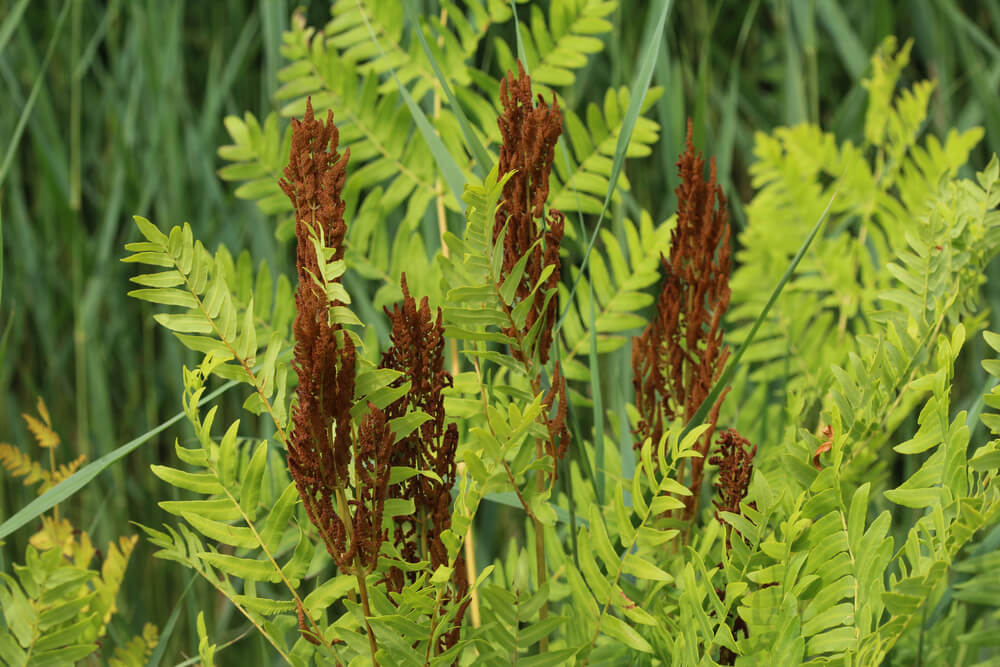
At first glance, it is incredibly easy to mistake the royal fern for another lovely fern species that we mentioned much earlier on our list. Both the royal fern and the cinnamon fern offer similar levels of contrast in a single plant. In the case of the royal fern, the outer fronds have long, rounded leaflets and a light green color that is almost like a lime green shade. The contrast that this plant offers comes from the large prominent brownish-gold structures that stand vertically in the center of the plant. That combination makes the royal fern a variety that you should not quickly pass up.
19. Staghorn Fern (Platycerium superbum)
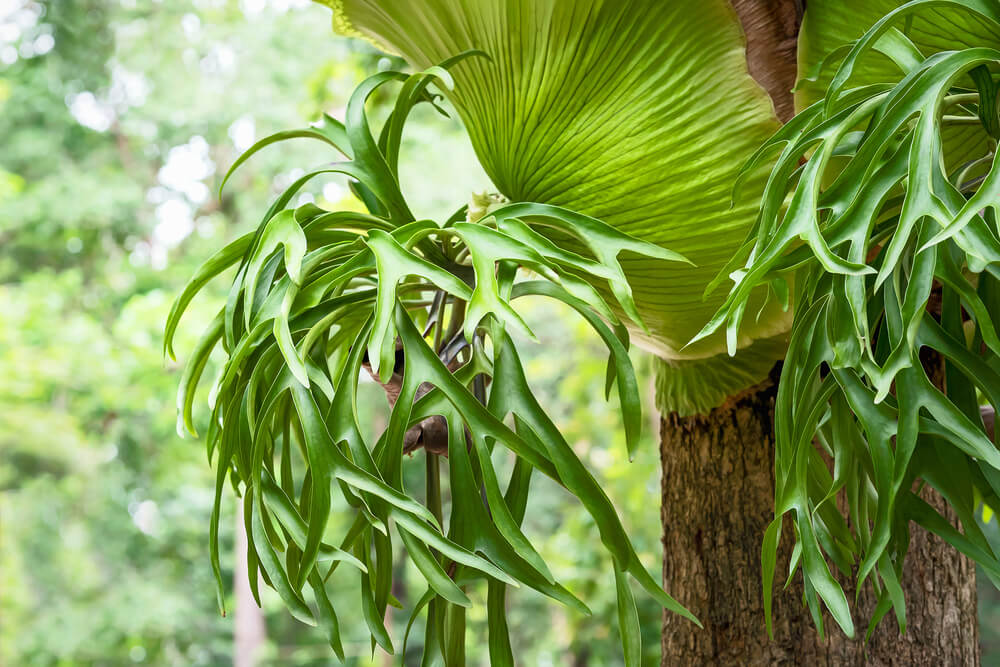
It is difficult to choose which characteristic of the staghorn fern is most impressive. Some might argue that it is the unique staghorn-like foliage shape that is most noteworthy on this plant. However, we think that the growth habit of the staghorn fern is what adds the most interest. As those who grow this plant already likely know, you can mount your staghorn fern on the side of a wooden plank or a similar surface. This growing habit mimics the way a staghorn fern would naturally attach itself to the sides of trees when growing in the wild.
20. Sword Fern (Polystichum munitum)
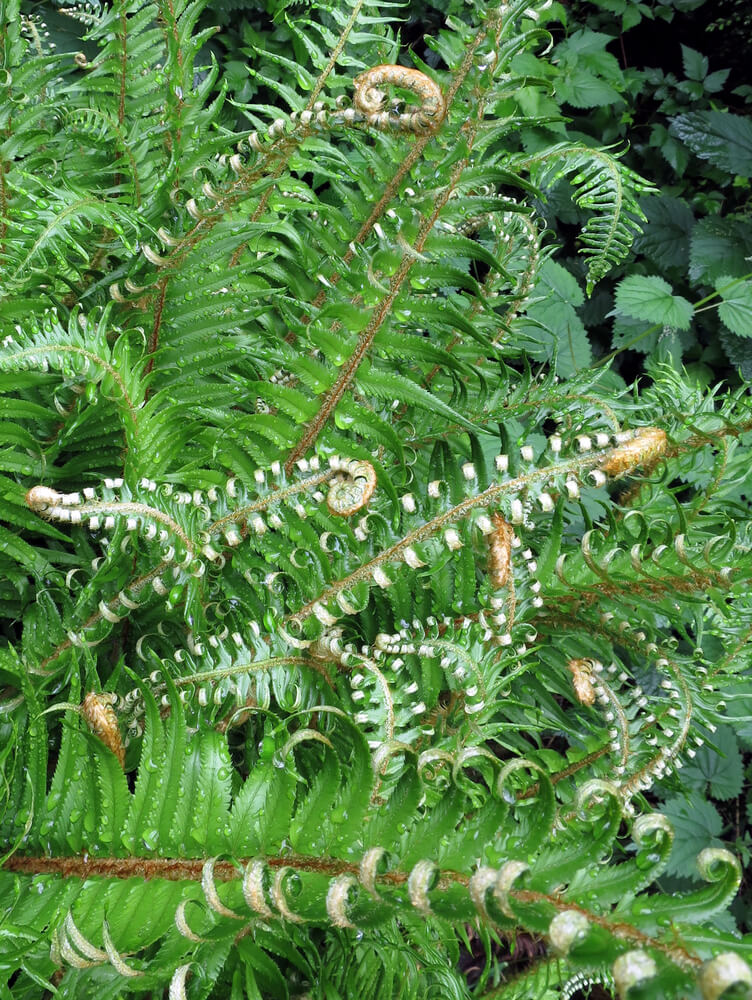
The sword fern is as worthy of a fern option as any other plant on this list. It has long fronds with leaflets that are also relatively long and spread to give each frond a wide appearance. Those fronds remain a vibrant green color throughout most of the year. However, when the end of the growing season nears, the fronds will turn brown as they age. But although the fronds turn brown, you don’t actually need to worry about cutting this plant back since it will rejuvenate itself at the start of the next growing season.
21. Vegetable Fern (Diplazium esculentum)
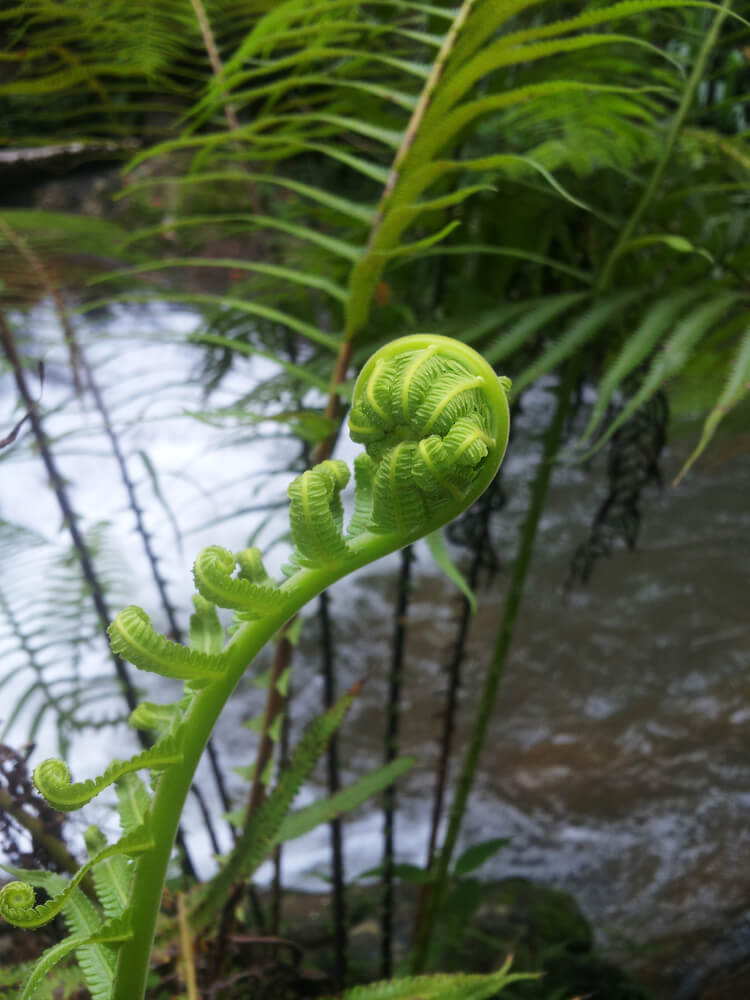
Some who read this list may know that there are several types of ferns that are edible, and since this final entry on our list has a name like a vegetable fern, you would be right to assume that this plant is among those edible options. If you choose to grow the vegetable fern for the sake of enjoying eating it, then you should be prepared to pluck the young fronds in early spring. Otherwise, you can let this plant develop naturally and complement the other plants in your garden as it unfurls with long, narrow, fan-shaped fronds.
[wp-faq-schema title=”Frequently Asked Questions About Types of Ferns to Grow Indoor and Outdoor” accordion=1]Since many people are unaware of how attractive and ornamentally valuable ferns are, naturally, they are also unaware of many other fern-related facts. We don’t want you to belong to the group of gardeners that do not fully understand and appreciate ferns, which is why we chose to answer a few of the most commonly asked fern questions below
21 Valuable Types of Ferns to Grow Indoor and Outdoor that Add the Perfect Greenery to Your Garden
You now know that ferns are a plant group that is not as boring as many gardeners assume. On the contrary, ferns come in so many different varieties that it is impossible to claim the entire group is uninteresting. The truth is that ferns are easy to care for, incredibly attractive to the eye, and are a fantastic option for those who struggle to grow plants due to partial shade or full shade conditions. Whenever you need a new fern variety to add to your garden, all you’ll need to do is return to this list to find everything you need to know.
